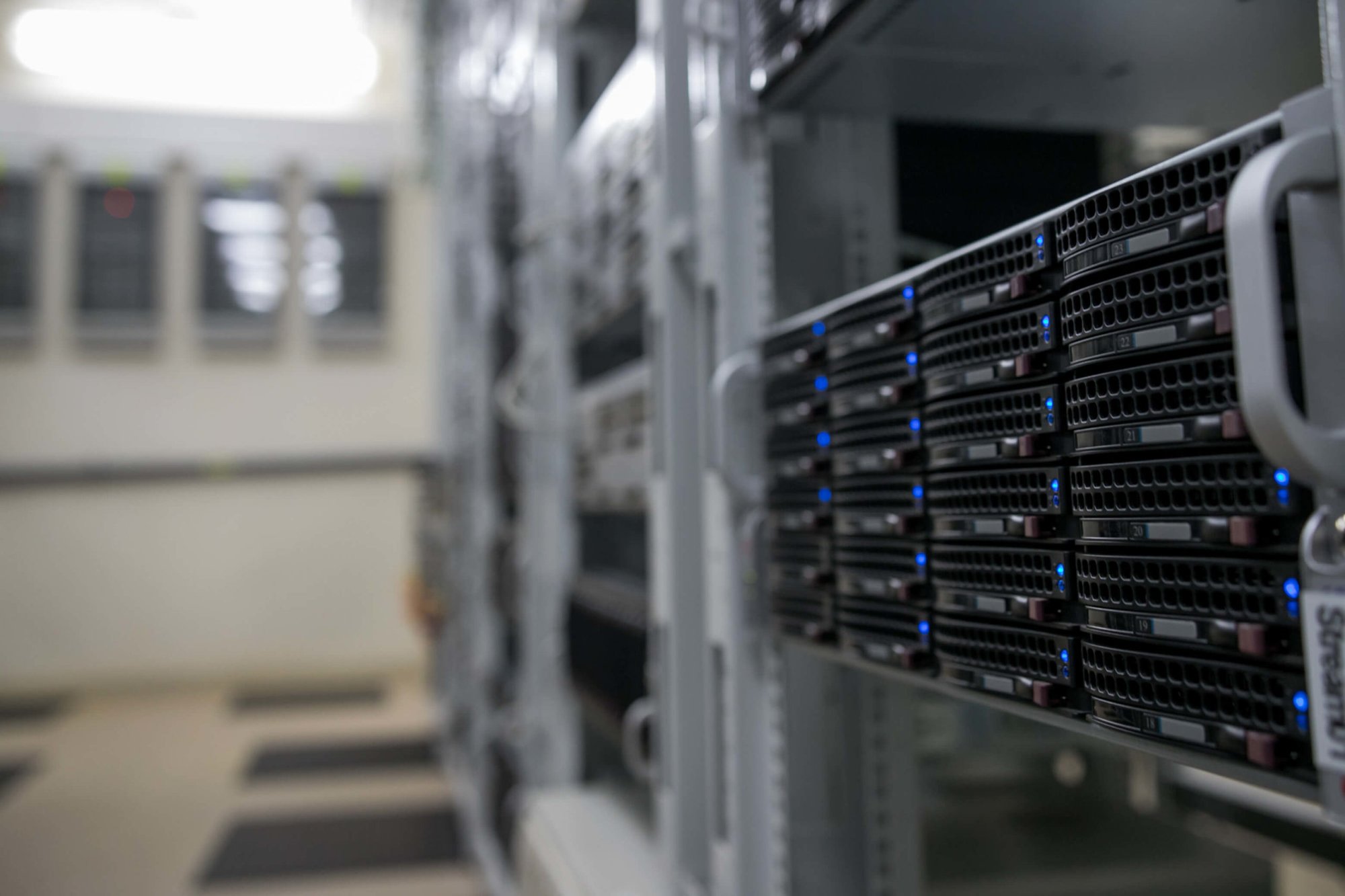Data Backup, Disaster Recovery, & Business Continuity
Helping Organizations Survive the Unexpected

Be Positive Your Data Is There When You Need It
It only takes one security breach, unexpected disaster, or an accidental “Delete” at the wrong time to make you REALLY regret not having sufficient processes in place to store, recover, and utilize your data.
First, let’s get clarity on the differences between data backup, disaster recovery, and business continuity.
What is Data Backup?
Data backup is a method of storing a copy of your data so that it can be retrieved when necessary if your original data has been lost, stolen, or corrupted. Data backup alone will only restore your information, not your software.
What is Disaster Recovery?
Disaster recovery is a documented process that you follow to respond to incidents that disrupt or shut down your operations. Data backup is a component of disaster recovery.
What is Business Continuity?
Business continuity is a proactive documented plan that anticipates potential threats and guides the restoration of operations in the event of a physical or digital disaster. Disaster recovery and data backup are components of business continuity.
How Long Can You Be Without Your Data?
That’s just one of the questions that we’ll ask as we work with you to create your customized data backup and disaster recovery plan.
Actually, we’ll ask lots of questions to determine just what type of data you generate, what needs to be backed up, and with what frequency. We’ll want to know about the importance of your data to your operations, how often it changes, the type of equipment you have, who is involved, how your company is expected to grow, and how soon you might need to get your data back if a “data disaster” occurred.

Bounce Back from Disaster With VC3
Data backup, disaster recovery, and business continuity services are all delivered within our comprehensive IT management framework.
Each client’s support team works to establish procedures that are best suited for the client's organization, and then continuously manages the technical components to make sure that when and if something happens – such as a lightning strike, earthquake, cyberattack, or human error – the plan rolls out and the effect on the organization is minimized.
The thought of not having VC3 take care of our IT is actually pretty scary.
When I call VC3, I know that they’re going to handle it, and they’re going to get back to me and let me know how it was fixed.
Concerned About Your Data Backup, Disaster Recovery, or Business Continuity Plan?
For an evaluation of your business and a recommendation for a backup and disaster recovery strategy that coincides with your specific needs, give us a call or schedule a free consultation.
We’re happy to share our expertise with you, whether or not you decide to work with us.

Want to Learn More Before Talking to a Salesperson?
What Do You Need to Know About Data Backup?
Where Do Many Organizations Go Wrong with Their Backup Strategy?
In many organizations, managers assume their data is getting backed up and that if they get a virus, if their server crashes, or if someone accidentally deletes a file, their IT guy will go into the backup and restore the data, and you’ll be good to go in a matter of minutes.
That's not the case for many organizations.
The fact is, data might not be getting backed up in the first place. And even if measures are in place for automated backups, there is no guarantee that data can be easily, efficiently, and accurately recovered unless the backups are properly installed and tested on a regular basis.
Your Data Backup Method Matters
Tossing a backup drive onto a desktop is NOT the way to store data. Using tape drives or an external hard drive on your server isn’t the way to go either.
An effective backup system shouldn’t just stand alone.
It should be considered as part of your overall business continuity and security strategy which is centralized, automated, and not dependent upon a human touching it to work.

How to Choose a Backup Solution
Whatever option you choose, you need to not only consider capacity requirements but also how you will restore the data when you need it.
For example, if you decide on a cloud-based backup, determine how long it will take to download when you need it.
The following five guidelines should be included in your decision-making process:
- Determine exactly what data you need to back up.
- Determine the total storage that you’ll need.
- Choose a business-class solution, not a consumer solution.
- Decide how long the backups need to be available.
- Decide how quickly you will need to restore your data in the event of a disaster.
Data Backup Options
-
File-Based Backups
If you just need your files and not the software to run them, then all you need is a file-based backup. Obviously, you can’t do anything with the data by itself.
-
Image-Based Backups
Think of an image-based backup as a snapshot of your server. Not only is all of the data stored but also all your software and how it is configured is also captured.
-
Cloud-Based Backups
Uploading your backups to a location on the internet means your data is safe if something happens to your physical location. However, you need sufficient bandwidth to both upload everything for storage and download everything for use.
-
Onsite Backups
Data is stored in devices at your location. If your office is damaged or destroyed by an accident or incident, it could be impossible to retrieve your data.
-
Offsite Backups
Data is stored at a location other than your office.
-
Failover
Failover protects your business from downtime if something happens to your server by continually synchronizing one server with another.
The Ideal Data Backup Scenario
When you’re deciding how to back up your data, you might be looking at a combination of the above options and the costs for each could be a go or no-go consideration. For example, you might need a cloud-based image backup along with a failover.
Whichever method you choose, don’t neglect to test your backup from time to time to ensure that the backup is performing properly and that you can move to backup systems or recover data as you have planned.
The right data backup solution all depends on your organization's needs and how quickly you need to get back up and running, which is what disaster recovery is all about (as you'll read in our next section).
What Do You Need to Know About Disaster Recovery? 👇
Disasters Can Come From Force Majeure or the Delete Button
What comes to mind when you hear the word disaster? Earthquakes, floods, and fires? No doubt these can all have disastrous consequences. But when you’re an organization that relies on technology, any time something goes amiss with your data could be a potential disaster for you and everyone in your world, including your customers.
Data disasters can come in the form of cyberattacks, equipment malfunctions, and plain old human error just as they can come from force majeure.
What will you do if something does, in fact, happen? That’s where your Disaster Recovery Plan comes in. This documented set of procedures details step-by-step processes that your staff will follow in the event that your operations go down and you have to get back up and running from your backups.
Developing Your Recovery Strategy
Because disasters come in many forms and you don’t know exactly what you’ll face in the future, you need to be prepared for different scenarios.
We hope that you never have to experience anything more than a mistakenly deleted file, but when you’re creating your plan you have to also think through what you would do if something happened to your physical assets - your building, computers, phones, equipment, etc. - and you had to not only completely restore operations but also do it from a different location.

Begin to create your disaster recovery plan by thinking through these five steps:
-
Inventory all your hardware, software, and equipment.
-
Determine your threshold for downtime. (See RPO and RTO below.)
-
Assign responsibilities for the implementation of your plan.
-
Plan how you will communicate with employees, customers, vendors, and others.
-
Plan how you will operate at alternate locations.
How Much Data Loss Can You Live With?
Your answer is none, right? Unfortunately, you have to ask yourself that question. It might be unrealistic for you to have a backup and recovery system that eliminates the possibility of downtime in most scenarios, but most companies need their Disaster Recovery Plan to fit their budget, too. That’s why Recovery Point Objective and Recovery Time Objective are so important.
Recovery Point Objective (RPO)
Your recovery point is the time between your last backup and your data crash. For example, if your data was backed up at 4 am and a crash happens at noon, then you will have everything backed up EXCEPT for that day’s transactions. Now imagine that you only back up once a week. Will you realistically be able to recreate everything that happened in that situation - all your orders, invoices, payables, and operational information? Probably not.
To determine your recovery point, you have to think about how sensitive your organization would be to lost data and weigh that with the options and budget you have to work with. Sometimes, the best way to achieve your RPO is by using a combination of backup solutions such as cloud-based and onsite that have different parameters.
Recovery Time Objective (RTO)
Your recovery time is the amount of time that you can be without your data while systems are restored. It will probably take longer than you imagine to get operations back up and running after a data crash. Obviously, it’s going to take a lot longer to recover from an event that takes down your physical building than to recover from something like a cyberattack. Even so, it is not uncommon for a company that is not fully prepared to be down for days or even weeks after a data breach.
Often when managers are going through the process of creating a Disaster Recovery Plan and thinking about their objectives for restoring operations, it leads them to think about how they can ensure that the company will even survive a full-blown disaster. That’s where business continuity comes in.
What You Need to Know About Business Continuity 👇
Business Continuity Plans Ensure Operations Continue
Do you want your organization to be able to continue after you experience an incident like a cyberattack, natural disaster, or some other type of unexpected disruption? If your answer is yes, then you need to have a business continuity plan.
It’s best to set aside any false sense of security that might be keeping you from taking the time to equip your organization to withstand a major incident. It could mean the difference between having to shut down or, well, continuing.
The Difference Between Business Continuity and Disaster Recovery
Disaster recovery is a component of business continuity. Your business continuity plan will encompass your organization as a whole and include non-technical aspects such as physical facility and equipment, personnel, supply chain, and communications.

Components of a Business Continuity Plan
Your Business Continuity Plan will look different depending upon your organization. For example, a manufacturing company might need to outsource production for a period of time. A financial services company might need to get workers set up in a different physical location with laptops.
No matter the industry, there are some common components of the plan:
-
Assessing potential risks and predicting their level of severity.
-
Planning out your response and what resources will be needed to get your priority functions up and running.
-
Determining the roles of employees in deploying the plan.
-
How you will communicate internally and externally, including who will be the spokesperson to the media.
-
Assurance that the plan is functional, with testing and updating as necessary.
Don’t Wait for a Disaster to Find Out If Your Plan Works… or Not
VC3 provides data backup, disaster recovery, and business continuity to organization through our Comprehensive IT Management framework.
Contact us today to explore how you can empower your goals by improving your IT experience.